If you haven’t started using mentor texts in your classroom yet, grab a coffee and pull up a chair. There’s a lot to cover! The teacher team at Teach Starter has pulled together their best advice, tips and mentor texts you can use with your elementary students to enhance their learning.
You do not have to be an English teacher to benefit from the helpfulness of mentor texts. Whether you’re teaching a specific writing style, a mathematical concept or poetry, these texts are great for all subject areas. Be sure to scroll to the bottom for some book titles you can add to your teacher wishlist or check out from the school library.
What Is a Mentor Text?
First and foremost, what is a mentor text? Simply put, a mentor text is a piece of literature students can read and reread for specific learning purposes. Mentor texts are normally short and engaging and provide context that students can relate to.
Other characteristics and uses of mentor texts include:
- Teaching life lessons and skills such as compassion and inclusion
- Teaching students to read with a writer’s eye (e.g., sentence structure or word choice)
- Acting as a foundation to learn or imitate a specific writing form
- Demonstrating what good writers do
- Helping students take risks in their writing and develop their skills
Mentor texts should be at a level that students can read independently or with some support. They can come in many forms, such as:
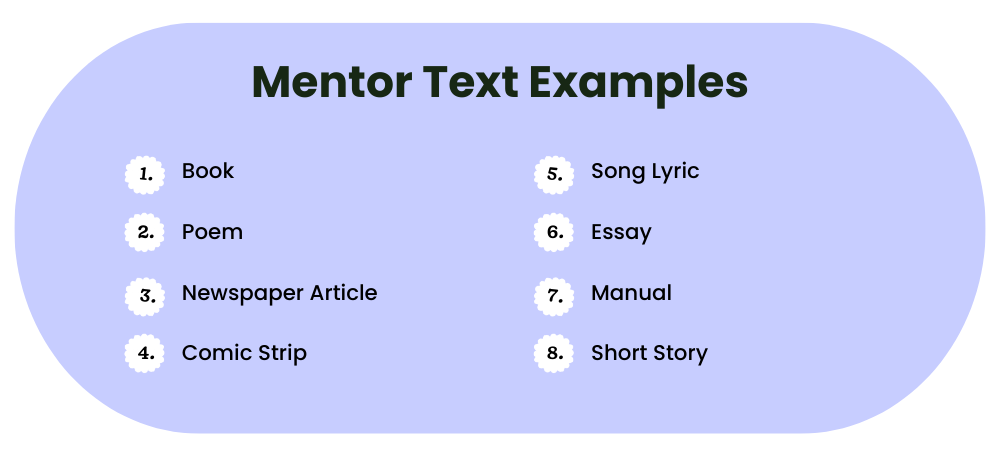
So is it proven that mentor texts actually help students? Yes! A study from the Journal of Research in Childhood Education found that students ages 7-11 improved their quality of writing from pretest to post-test when teachers used mentor texts.
How to Use Mentor Texts
Now that you know these handy teaching tools, let’s look at how to use them.
There are many ways to use mentor texts with your students, depending on your classroom goals. They can be the focus of your next writing or reading workshop or a theme for a week of reading activities and exercises.

Here are some ideas to use in your own teaching:
Understand Different Writing Structures
Mentor texts can help students understand the structure of different writing styles. Have your students read your chosen mentor texts, and then discuss how the author introduced the topic, developed the main idea, concluded the text etc.
Teach Specific Writing Skills
Pair students together with a mentor text to teach specific writing skills such as descriptive language, sensory details or dialogue. Have your kids use sticky notes to identify examples of these skills, and discuss how the author’s choices affected the reader’s experience.
Use as a Model for Student Writing
Use a mentor text as a guide for students to write their own text using the author’s structure and different craft techniques.
Introduce a New Type of Writing
Want to introduce a new type of writing, such as persuasive essays, personal narratives or informational texts? Grab a mentor text to help! Multiple text examples will help students make connections and identify characteristics of the particular genre you’re covering in class.
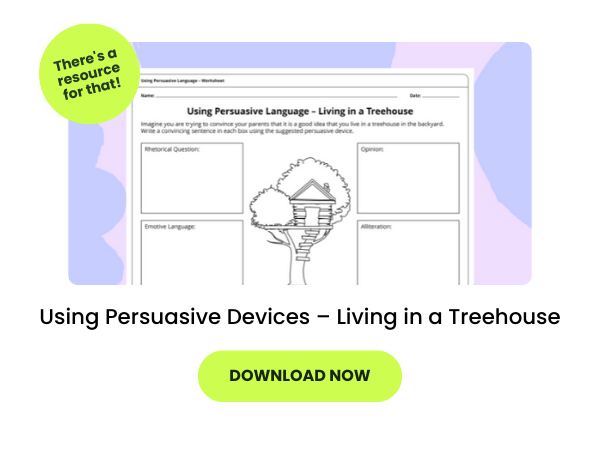
If you work with younger students, picture books can serve as helpful mentor texts in your lessons — from learning how to make predictions and inferences to learning about how characters change over the course of a book.
Tips to Keep in Mind When Using Mentor Texts
When choosing and using mentor texts in your classes, keep these tips in mind:
- Use a morning meeting to review any new vocabulary words or definitions that will pop up in your mentor texts. This will give your students a jump start in understanding the text and help them feel more confident.
- Present the mentor text by reading aloud in addition to having students read the text themselves. Students who struggle with reading may benefit more from hearing it told aloud.
- Don’t be afraid to use multiple examples! There are handfuls of books and mentor texts that can fulfill your goals, whether you want to teach point of view or text structures.
Questions Students Should Ask
Before reading or reading aloud, discuss with your students what they should be listening or looking for as they absorb the story or the text. Here are some examples of questions you can either write on the board or discuss as a group after reading:
- What is the genre of the mentor text?
- What is the main idea or topic of the mentor text?
- What is the author’s purpose for writing this piece?
- How is the text organized or structured?
- What writing techniques or strategies does the author use to engage the reader?
- What impact do these techniques have on the reader?
- How could the author improve this piece?
- How can I use the mentor text as a model for my own writing?

Examples of Mentor Texts
Ready to dive into some teacher-favorite titles you can add to your classroom library or ask the school librarian to pull aside for your students? We’ve made it easy and categorized them for you depending on your lesson’s goals! Read on for books you can use in a variety of ELA lessons and even your math class.
Mentor Texts for Point of View:
- Ruby Bridges: Through My Eyes by Ruby Bridges
- The Day the Crayons Quit by Drew Daywalt
- Trombone Shorty by Troy Andrews
- The Sandwich Swap by Queen Rania of Jordan Al Abdullah
- The Tree Lady by H. Joseph Hopkins
- Three Hens and a Peacock by Lester L. Laminack
- When Marian Sang: The True Recital of Marian Anderson by Pam Muñoz Ryan
- Creepy Carrots! by Aaron Reynolds
- Believe Me, Goldilocks Rocks! by Nancy Loewen
- Ivan: The Remarkable True Story of the Shopping Mall Gorilla by Katherine Applegate
- Grace for President by Kelly DiPucchio
Mentor Texts for Making Connections:
- Each Kindness by Jacqueline Woodson
- Fred Stays With Me! by Nancy Coffelt
- Alexander and the Terrible, Horrible, No Good, Very Bad Day by Judith Viorst
- The Invisible Boy by Trudy Ludwig
- Ira Sleeps Over by Bernard Waber
- Enemy Pie by Derek Munson
- The Stray Dog by Marc Simont
- The Relatives Came by Cynthia Rylant
- Evelyn Del Ray is Moving Away by Meg Medina
- The Thing Lou Couldn’t Do by Ashley Spires
Mentor Texts for Making Inferences:
- Stellaluna by Janell Cannon
- The Boy Who Grew Flowers by Jen Wojtowicz
- The Stranger by Chris Van Allsburg
- The Memory Coat by Elvira Woodruff
- Tuesday by David Wiesner
- The Bracelet by Yoshiko Uchida
- Rosie’s Glasses by Dave Whamond
- City Dog, Country Frog by Mo Willems
- The Mysteries of Harris Burdick by Chris Van Allsburg
- The Bear Ate Your Sandwich by Julia Sarcone-Roach
- Two Bad Ants by Chris Van Allsburg
- Where Are You Going Manyoni? by Catherine Stock
- Tar Beach by Faith Ringgold
Mentor Texts for Visualizing
- Twilight Comes Twice by Ralph Fletcher
- The Last Stop on Market Street by Matt de la Peña
- A Bad Case of Stripes by David Shannon
- Fireflies by Julie Brinckloe
- Where Butterflies Grow by Joanne Ryder
- Bedhead by Margie Palatini
- Cloudy With a Chance of Meatballs by Judi Barrett
- The Storm Book by Charlotte Zolotow
- The Most Magnificent Thing by Ashley Spires
- Owl Moon by Jane Yolen
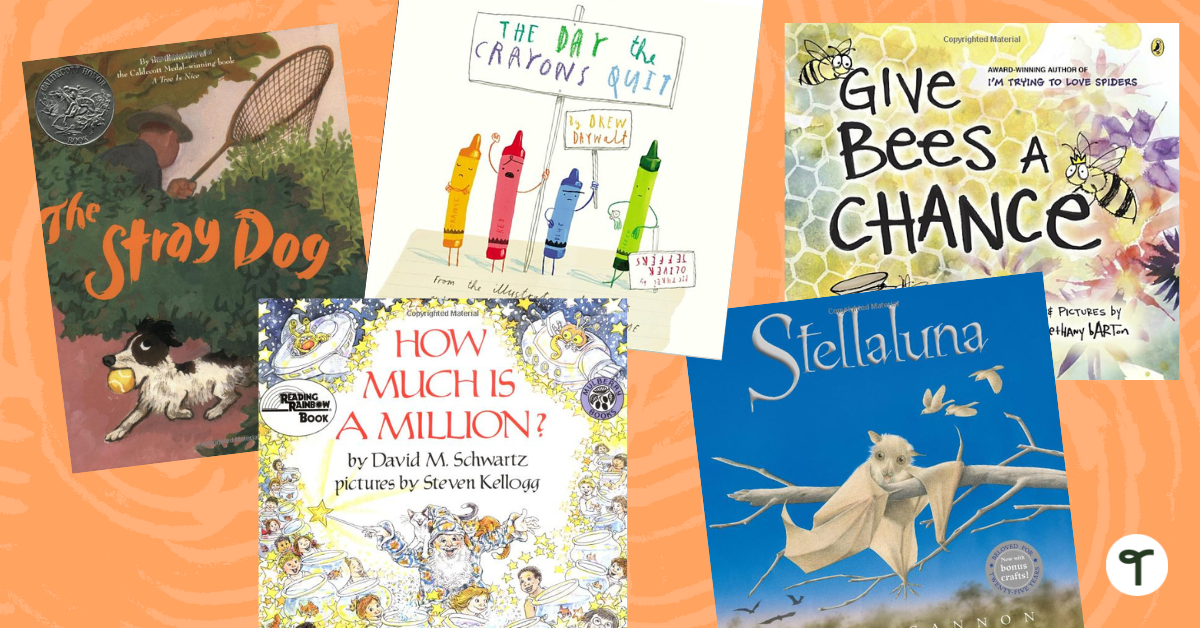
Mentor Texts for Teaching Character Traits
- The Smart Cookie by Jory John
- Not Norman: A Goldfish Story by Kelly Bennett
- The Other Side by Jacqueline Woodson
- Sylvester and the Magic Pebble by William Steig
- Thunder Cake by Patricia Polacco
- Chrysanthemum by Kevin Henkes
- Julius, the Baby of the World by Kevin Henkes
- The Recess Queen by Alexis O’Neill
- Those Shoes by Maribeth Boelts
- Beatrice Doesn’t Want To by Laura Numeroff
- Stand Tall Molly Lou Melon by Patty Lovell and Dr. Wayne W. Dyer
- Yeh-Shen: A Cinderella Story from China by Ai-Ling Louie
- Amazing Grace by Mary Hoffman
Mentor Text for Text Structures
- Hurricanes! by Gail Gibbons
- Give Bees a Chance by Bethany Barton
- Sincerely, Emerson: A Girl, Her Letter, and the Helpers All Around Us by Emerson Weber
- The Youngest Marcher: The Story of Audrey Faye Hendricks, a Young Civil Rights Activist by Cynthia Levinson
- Henry’s Freedom Box: A True Story From the Underground Railroad by Ellen Levine
- So You Want to be President? by Judith St. George
- What Do You Do When Something Wants to Eat You? by Steve Jenkins
- Buzzing With Questions: The Inquisitive Mind of Charles Henry Turner by Janice N. Harrington
- What’s the Difference Between a Turtle and a Tortoise? by Trisha Sue Speed Shaskan
- A Place for Butterflies by Melissa Stewart
- What if You Had an Animal Tail? by Sandra Markle
- Milk: From Cow to Carton by Aliki
- She Persisted: 13 American Women Who Changed the World by Chelsea Clinton
- Balloons Over Broadway: The True Story of the Puppeteer of Macy’s Parade by Melissa Sweet
Picture Book Mentor Texts to Teach Math
- How Much is a Million? by David M Schwartz
- 100 Bugs! by Kate Narita
- Inch by Inch by Leo Lionni
- 1, 2, 3, to the Zoo by Eric Carle
- Ten on a Twig by Lo Cole
- Spaghetti and Meatballs for All! by Marilyn Burns
- Sir Cumference and the First Round Table by Cindy Neuschwander
- Math Potatoes: Mind-Stretching Brain Food by Greg Tang
- Monster Math by Anne Miranda
- Billions of Bricks: A Counting Book About Building by Kurt Cyrus
- On the Launch Pad: A Counting Book About Rockets by Michael Dahl

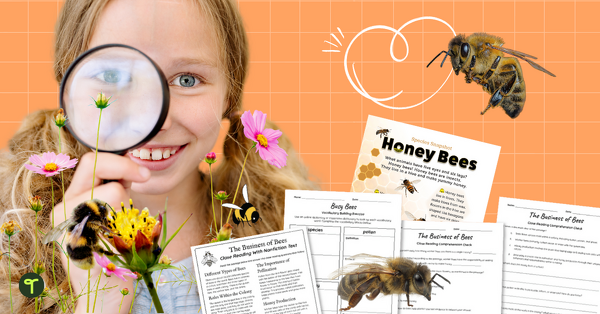
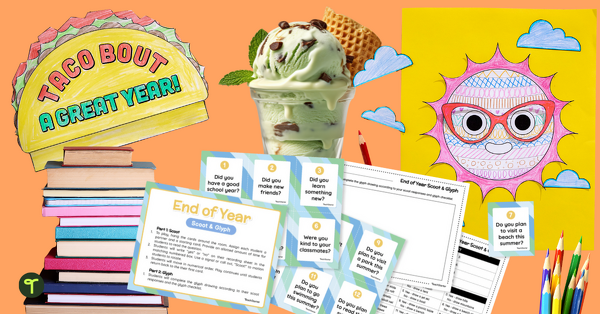
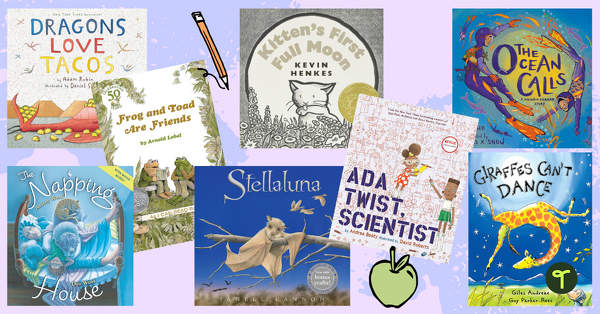



Comments